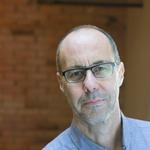“Now the whole world is going solar. There’s a lot of room for students to start companies.”
– Karin Hinzer
When University of Ottawa doctoral candidate Viktar Tatsiankou shows his two entrepreneurial colleagues a weathered, toaster-sized metal box with a protruding bug-eye lens on one side, he gets smiles and a guffaw.
The prototype, developed in 2014 as Tatsiankou’s master’s project in engineering, worked for only six weeks before water shorted its electronics. But that was long enough to demonstrate that the SolarSIM (Solar Spectral Irradiance Meter), as it is now known, could analyze the solar spectrum more simply and inexpensively than ever, a critical tool for improving solar energy technologies.
The SolarSIM has since evolved into a unique (and waterproof!) device that has reinvented the way scientists around the world measure sunlight and the atmosphere. It is the cornerstone of Spectrafy, a solar start-up founded by Tatsiankou, its chief technology officer, and CEO Richard Beal.
The duo and Spectrafy’s third employee, Patrick McVey White, are shining examples of how the University of Ottawa’s SUNLAB, one of Canada’s leading solar energy research labs, is spinning off both technology and talent to fuel the future of solar energy companies in Canada and beyond. Tatsiankou currently conducts research at the lab, while Beal is a former SUNLAB post-doc and McVey White recently completed his master’s degree there. “Without the SUNLAB facilities this device would never have been developed,” says Tatsiankou, 28.
SUNLAB has enabled the entrepreneurs to develop and test SolarSIM with world-class equipment, including the solar panel test site atop the Mann parking garage. It’s the culmination of a decade-long development for University of Ottawa engineering professor and Canada Research Chair Karin Hinzer, who founded SUNLAB in the summer of 2007 during the first glimmers of the present solar energy flowering.
“People take us seriously now,” says Hinzer, with a laugh. “Now the whole world is going solar. There’s a lot of room for students to start companies.”
For the Spectrafy team—three of the more than 85 alumni who have cut their solar software and hardware teeth at SUNLAB—it’s been both a technology and personal proving ground. “It’s like Shark Tank,” says Tatsiankou, referring to the reality TV show in which budding entrepreneurs pitch their ideas to potential investors.
The lab has also facilitated opportunities abroad. McVey White, a 25-year-old Montréal native, helped France’s renewable energy agency install their SolarSIM-D2 (the product’s second generation) during a four-month-long stint sponsored by SUNLAB. He is now Spectrafy’s development and operations manager, helping clients to integrate their software with the SolarSIM.
Spectrafy is the second SUNLAB-sparked start-up for Beal, 34, a Rhodes scholar who grew up in New Zealand and earned a doctorate in materials science at Oxford. He is now leveraging his hard-won experience from his previous company, COFOVO.
“COFOVO was a real learning ground with regard to what it really takes to build a successful company,” says Beal, who started the company in 2013 after his SUNLAB post-doc. Then, while gaining industry kudos and substantial seed funding, he watched the market for COFOVO’s product dry up as the cost of conventional solar panels plummeted.
With the SolarSIM-D2, the SUNLAB trio has developed an innovative product that is being bought by solar energy companies and national research labs around the world, including in the United States, Italy, France, Mexico and Australia. The device enables users to accurately measure the solar spectrum and total radiant energy, while simultaneously gauging atmospheric levels of ozone, water and aerosols, for a fraction of the cost of previous methods.
“The SolarSIM-D2 is a single, compact product that replaces up to seven solar and atmospheric sensors that have a combined cost of more than $400,000,” says Beal. “It’s a real breakthrough in simplifying advanced solar and atmospheric measurement.” The Spectrafy team sees broad potential for the SolarSIM sensors, from improving solar power plants to air quality and agricultural monitoring.
Spectrafy recently secured support from the National Research Council’s Industrial Research Assistance Program to help fund development of the next generation of SolarSIM sensors. The company is currently deploying a national network of SolarSIM sensors at seven federal government research sites across Canada—a contract worth over $500,000.
With this cross-country distribution of SolarSIMs, Tatsiankou is solidifying a new era of renewable energy, one that holds great promise for the native of Belarus who started to spend summers in Brockville, Ont., as an eight-year-old sponsored by the Canadian Aid for Chernobyl program.
“As far as we know, no other measurement network in the world possesses such a broad array of measurement capabilities,” says Tatsiankou. “Our dream is to have a global network of these devices.”

